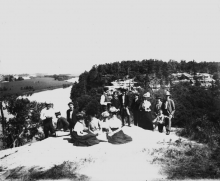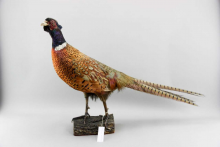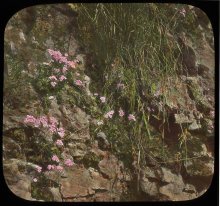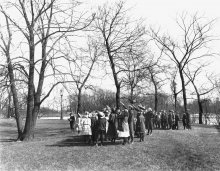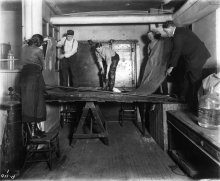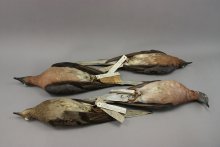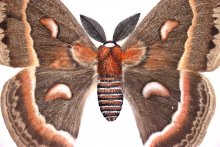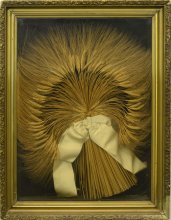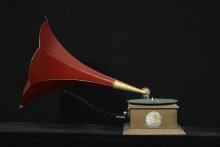Industrializing Illinois (1877-1917)
Following the Civil War, Illinois continued to grow in population, diversity, and complexity. Large-scale heavy manufacturing and a growing commercial sector joined agriculture as major employers of a rapidly growing population. Immigration continued, with African Americans from the South and southern and eastern Europeans joining more established groups. Conflicting interests sometimes led to unrest, strikes, and even violence. During this period, Illinois also became a center of exciting new movements in art, architecture, and literature.
Field trips, like the one pictured here, were among the many ways the Chicago Academy of Sciences actively included the Chicago community in its scientific work and promoted the appreciation of nature.
The Ring-necked Pheasant is an introduced species found across the state of Illinois. Native to Asia, this species was first brought to Illinois around 1890 and is managed as a game bird.
Herman Silas Pepoon (1860-1941) was a local naturalist with a particular focus on the plants of Illinois and the Midwest. He spent a considerable amount of time exploring Apple River Canyon, where he identified and collected over 500 species of plants. One of his most noteworthy discoveries in the canyon was Bird’s Eye Primrose (Primula mistassinica), a plant previously found only in more northerly locations.
The Chicago Academy of Sciences (now housed at the Peggy Notebaert Nature Museum) offers many outdoor opportunities, including classes like those conducted by Frank Woodruff (1867-1926). This image depicts Woodruff's bird identification class in Lincoln Park, possibly near the Chicago Academy of Sciences’ Laflin Building at Armitage and Clark.
Until the beginning of the twentieth century, animal specimens were traditionally preserved as study skins or as crudely stuffed mounts. Then, in the early 1910s, a man named Carl Akeley pioneered new specimen preparation techniques that enabled him to create more realistic displays. The Chicago Academy of Sciences also began to experiment with these ideas and devised large, meticulously-detailed dioramas as a new way to represent local species and natural areas.
The Chicago Academy of Sciences/Peggy Notebaert Nature Museum’s scientific collections include several study skins of extinct Passenger Pigeons (Ectopistes migratorius). These four Passenger Pigeon specimens were collected between 1880-1890 in northern Illinois (Evanston and Waukegan).
Today, anyone can share color photos of butterflies and moths by simply uploading them to social media. It wasn't so easy 120 years ago, when technology to capture color photographs and print the pictures on a page was in its infancy.
This decorative wheat shaft was placed on the grave of James Franklin Moss (1825-1904), a farmer from Jersey County. Wheat is a typical motif of mourning art. It symbolizes the divine harvest of death and the resurrection of the soul.
The phonograph had a profound impact on the way Americans experienced music. Prior to its invention, the only way to hear music was when it was played or sung live. Music was typically played in group settings, where all were welcome, and even expected, to sing along, and the melody was never played exactly the same way twice. The phonograph allowed people to listen to the songs they wanted to hear, when they wanted to hear them, and if they wanted to, they could even listen to them alone.
Hercules I is the first in a series of three Hercules paintings that Manierre Dawson completed in the wake of his visit to the Armory Show in Chicago. He was so taken by Marcel Duchamp’s 1911-12 work, Nude (Study), Sad Young Man on a Train (Nu [esquisse], Jeune homme triste dans un train), that he purchased it.
Pages






